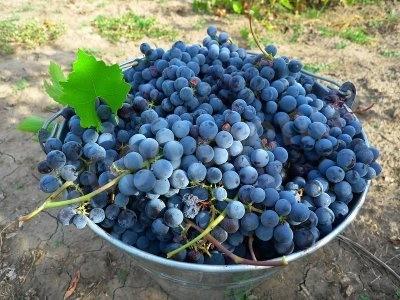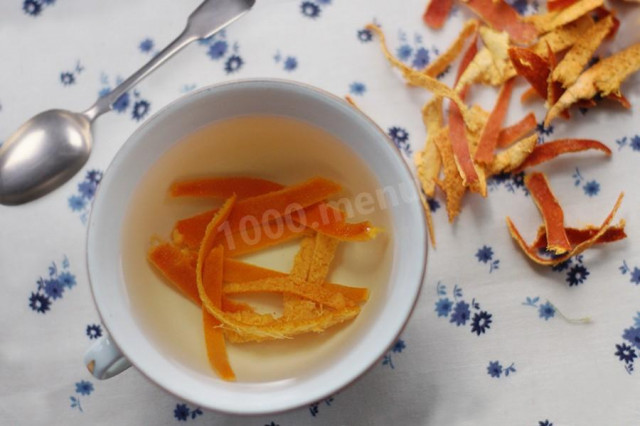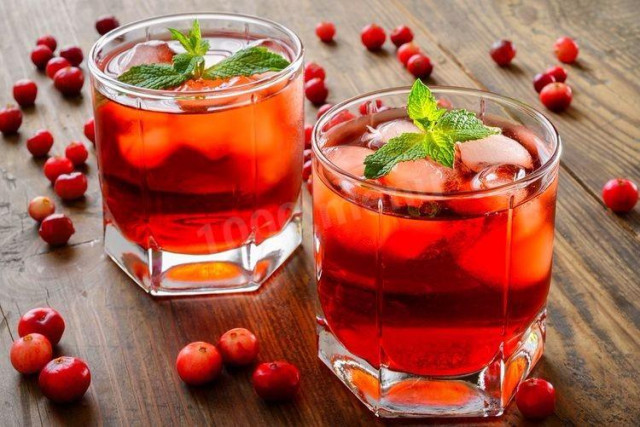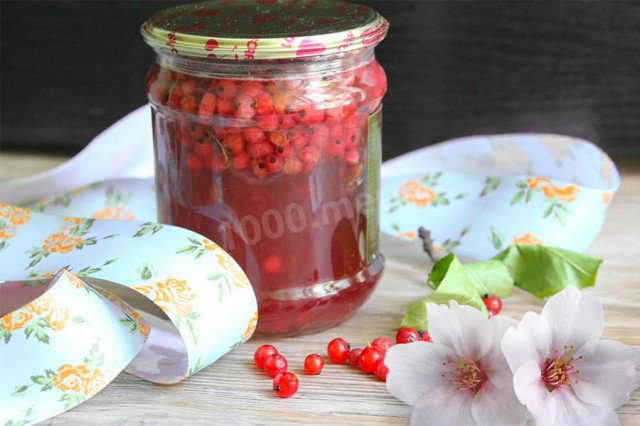Composition / ingredients
Cooking method
This is the basic process for technical and table-technical varieties. Basic - since a lot depends on the grape variety, water quality, temperature… After a number of successful production, you will already establish the technological process for yourself, up to the production of wine such as "Vermouth", "Amaretto", sparkling. Recipe reduced to a bucket of grapes (10 l. - approx. up to 8 kg.), which is the minimum productive norm for ease of manufacture.
Grapes are not washed, not cold and not treated with chemicals (due to natural yeast). Picking berries from twigs is not a dogma.
In a bucket, crush unwashed grapes with a metal pestle. Then use an electric drill with a construction whisk to kill to a more or less homogeneous mass. Periodically remove the branches from the corolla, which will be wound. If desired, you can take out twigs that have risen up without berries (twigs during the first fermentation do not significantly affect the quality, as do the bones, because during the primary fermentation they simply will not have time to massively "give bitterness").
Add boiled water in an amount of 40-50% of the wort volume **. The quantity is measured using a simple ruler. Pour the pulp into a tank made of enamel, stainless steel, plastic. Pour boiled water * at a temperature of +25-30 ° C. Cover the tank by setting aside air access for bacteria. Put in a dark place for fermentation at + 18-25 ° C. If the temperature is about +18 ° C, it is better to wrap a blanket. If there is foam, then open the tank lid more.
During the day, a "cap" of skins and unbroken berries will rise, if "no", then the reason is the low temperature or chemical treatment of berries or the hardness of water, in this case add 2-3 tablespoons of sugar without a slide and raise, at least for a while, the temperature to +23-25 ° C.
Stir the fermentation mass 3-4 times a day. On average, the process of primary fermentation takes about 7-10 days.
When after another stirring for 20-30 min. the "cap" will not rise, but there will be a smooth surface with free-floating skins and not broken berries, this means the sugar has fallen to 0% and the pulp is ready for fermentation (an error when the "cap" is not allowed to fall and the wort is put in a jar, which leads to an "explosion" and disruption of the technological process of making wine).
Squeeze the pulp ready for fermentation (pour it into a stocking (tights)) above the basin. Do not twist, except at the end, otherwise the bones will tear the material * **.
Pour the pressed wort into a glass container (it can be made of food grade plastic), if there are 2 containers, then one bucket into the first, the other into the second and again into the first (due to the uniform distribution of bacteria). The capacity should not be filled by more than 70-80% (less is better than more). At the same time, remember that 1 kg of sugar is equal to about 600 grams of liquid. The optimal volume of the fermentation tank is 10-25 liters, at least 4 liters.
Add sugar, stir, put a water seal of your choice (a special lid, a lid with a tube, a glove). Ideally, you need to lay sugar in portions for 2-3 times, approximately every 5-7 days, so the quality improves, the sugar is completely processed, the degrees increase and if suddenly during the manufacture there is a desire to stop at dry or dessert, and not bring it to sweet, etc.
The amount of sugar from 50 gr. to 350 gr. per liter. Up to 180 gr. closer to dry wine, and more than 250 gr. closer to sweet. To begin with, it is optimal to try 180-230 grams of sugar, since much depends on the acidity and sugar content of the berries.
If the period of the first fermentation is up to 10 days, then the second is from 20 to 45 days.
When the "gurgling" stops or the glove **** falls, it can even partially pull inside the container, then this is a signal that it's time to "remove the wine from the sediment" with a tube and put it to "reach" for 2-4 weeks, although in fact it is already wine. Pour the wine again and if a tartar (dark crust) forms at the bottom of the jar, then this wine is of excellent quality.
To avoid the formation of fungi, the jars must be sterilized (scalded with boiling water; rinse with a small amount of alcohol (vodka); hold in the oven). The ideal storage temperature is from 0 to +9 °C. If a fungus has formed, then remove the film, pour the wine into a sterilized jar with the addition of 50-100 grams of alcohol per 3-liter jar or 100-200 grams of vodka, but not moonshine. As a rule, the cause of the fungus is unclean containers.
* - only bring the water to a boil and working with this water, wort and wine, it is advisable to pour / pour always with a trickle (oxygen enrichment).
** - a maximum of 60%, and with a change of 40%, there may be an oversaturated taste.
*** - if you squeeze the pulp not completely dry, then "half-wine" is made of it, but this is another topic
**** - the water seal lid may be deformed, so it can be wrapped with adhesive tape at the joint. If during fermentation the glove has swollen to a critical size, then make a puncture(s) with a needle in the finger (if necessary, you can tie it again).
Caloric content of the products possible in the composition of the dish
- Grapes - 65 kcal/100g
- Granulated sugar - 398 kcal/100g
- Sugar - 398 kcal/100g
- Water - 0 kcal/100g




